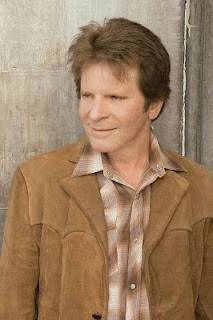
Despite the history of Methodism in America back to pre-Revolutionary times, the United Methodist Church has only existed since 1968. It formed from a merger of the Methodist Church (USA) and the Evangelical United Brethren. The Methodist Church was primarily English in heritage, while the much smaller EUB was mainly German, but both were Wesleyan traditions. The reason they merged, however, was pretty horrific.
The Methodist Church came into being in 1939, from a merger of the Methodist Episcopal Church and its lost child, the Methodist Episcopal Church, South. These denominations had split in 1844 because the Southerners refused to renounce slavery, while the denomination overall had abolitionist teachings. John Wesley himself had published tracts on abolitionism, besides vocally advocating against oppressing Indians and other colonized peoples.
The two Methodist Episcopal traditions were almost identical in doctrine and teaching, and the South denomination was suffering massive losses of people and resources, so there was little to lose from the merger, while the Southerners in particular had plenty to gain. However, while slavery had ended in the interim, racial bigotry had not. The Southerners made a stipulation to the merger: the reunified Church absolutely needed to maintain segregated congregations.
Among many tragedies in American history, one looms large: progressive Whites advocated the abolition of slavery, but once slavery ended, they lost interest in racial issues. As Dr. Ibram X. Kendi writes, the Republican Party was founded on abolitionist principles, but demonstrated no interest in civil rights issues after the passage of the Enforcement Act of 1870. The pattern was widespread. To their widespread disgrace, the Northern Methodists acquiesced.
As a digression, whenever I visit my second home of Lawrence, Kansas, I’ve lately attended the local African Methodist Episcopal church. This group, informally called the AME, split from the original Methodist Episcopal Church in 1816 because the original MEC refused to ordain Black ministers. This despite John Wesley’s stated opposition to slavery and racism; Wesley was a personal friend of leading British abolitionist MP William Wilberforce.

So to recap: in 1939, Southern Methodists wanted a Christianity stratified by race, and Northern Methodists didn’t care enough to fight. The old Methodist Church therefore had racist inclinations written into its foundation. But by 1968, Methodist leadership found this embarrassing, and wanted to revoke this stipulation. That’s where the Evangelical United Brethren come in: their tradition was doctrinally anti-racist. Many EUB leaders also served as Civil Rights volunteers.
It’s sad to think, but Methodist leaders understood it would be easier to create an entirely new tradition, and institute an entirely new charter, than amend the one they already had. The Methodists were numerous, and relatively secure; they didn’t need the EUB merger to reinforce themselves. The Methodists wanted the merger for only one reason: they knew that, without it, heel-dragging traditionalists would keep segregation written into their charter forever.
Which returns us to what happened in Chicago this week. Given the opportunity to widen their organizational reach, Methodists instead opted to cross their arms and deepen their opposition to LGBT+ inclusion. Just as their previous leaders once predicted, changing existing doctrine is exceedingly difficult, even when the status quo apparently puts select populations outside the welcome of God’s love. How, I wonder, does this serve any Christian interest?
Throughout history, many individual Christians have done the world great good. Christians have taken lead on abolitionism, Civil Rights, anti-colonialism, and other flashpoint issues. But whenever sufficiently large numbers of Christians come together that they need to created a hierarchy and doctrinal statement, that good becomes diminished. Christians are often leaders in overdue social changes. Churches, however, tend to impede change as often as enable it.
The UMC has struggled with this issue for decades. I still attended Methodist when the Church defrocked Reverend Jimmy Creech for officiating covenant services (not, please note, “marriages”) between two same-sex couples. I was more conservative back then, admittedly. But even then, I struggled to explain why declaring certain expressions of love was any better than saying mixed groups couldn’t sit in the pews. Clearly, twenty years later, nothing has gotten better.














